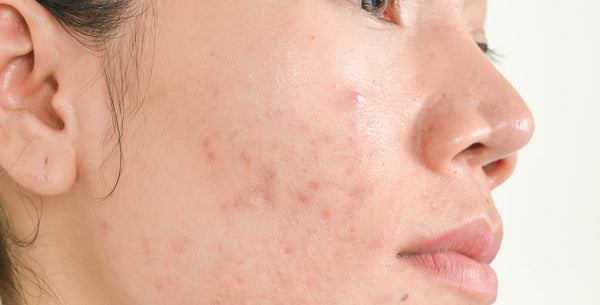
If you feel embarrassed about a scar, or if a scar restricts movement or causes pain and nothing has given you any relief, it’s important to find a way to reduce or even eliminate scar tissue.
You’ve probably seen articles telling you to try new creams or home remedies, but these solutions won’t get to the root of the problem without a bit of help. Help from the latest scientifically backed healing tool that’s perfect for a variety of skin remedies. Yes, we are talking about red light therapy for scars, whether be it acne or surgical.
Why Do We Scar?
According to the American Academy of Dermatology, scarring is a normal part of the healing process. But not all wounds leave a scar. Whether you get one or not depends on a combination of biological processes that include the characteristics of the wound and how it heals. Infection or pulling off a scab too early, for example, can make getting a scar more likely.
In a way, scarring is pretty genius. It’s a fast and effective way to close a wound. During skin regeneration (which is a constant process), fibroblasts produce an organized lattice of collagen that results in normal skin.
However, when the body is in “emergency-response mode” after injury or surgery, the healing response is more like triage: the aim is to close the wound as fast as possible…how it looks afterward is a secondary concern. The result of this emergency-response healing is a haphazard collection of collagen—the visible scar.
Why don’t scars disappear over time? Skin cells regenerate about once a month. At the lowermost layers of the scar, newly formed cells push older cells to the surface. However, here’s the key: the emerging cells develop the same characteristics as the cells they are replacing; so cells in contact with scar tissue will become new scar tissue… and not normal skin cells.
Types of Scars and Common Treatments
There are five types of scars that can result from injury, burns, surgery, or disease.
 |
Fine-line (“white”) scars result from cuts or surgery (such as a C-section), leaving a visible line. Silicone gel sheets soften and flatten white scars to minimize their appearance. Also, red light therapy for surgical scars is quite effective as well. |
| Keloid scars result from out-of-control collagen production in deep wounds. Keloid scars keep growing even after the wound has healed and scarring may extend beyond the injured area. Keloid scars are often painful, itchy, and may restrict movement. Treatment includes silicone sheets that soften and flatten the scar, laser resurfacing, and cortisone injections. Cryotherapy (freezing the scar) can be used on smaller scars, and plastic surgery minimizes the appearance of larger varieties. |  |
 |
Hypertrophic scars also result from excessive collagen production, but there is no scar growth outside of the boundary of the injury. Hypertrophic scars are often treated using silicone gel sheets, laser resurfacing and cortisone injections. |
| Pitted scars can result from chickenpox or acne. Chemical peels, dermabrasion, collagen injections, and punch grafts help minimize the “grapefruit” appearance of these scars. Luckily red light therapy for acne shows promise in minimizing the appearance of scars. |  |
 |
Contracture scars are often caused by burns. A tough layer of collagen forms over the burned area causing painful tightness that can affect the nerves and muscles and restrict movement. Contracture scars are treated using pressure dressings, laser resurfacing, and plastic surgery. |
Red Light Therapy for Scars
Red light therapy (also known as low-level laser therapy (LLLT) shows great promise as an effective treatment for scars. It goes beyond minimizing the appearance of scars and penetrates the body at the cellular level using specific wavelengths of light (630nm-700nm).
Human cells respond beneficially to these waves in much the same way that plant cells respond to natural sunlight: by producing energy and optimizing cell function. You can break this reaction down into three distinct areas: repair and regeneration, collagen production, and stem cell activation.

Red light reduces inflammation and supports tissue repair and regeneration by penetrating 8-10mm (⅓”) into human tissue. Once there, it stimulates cellular energy production, the lymphatic system, collagen and elastin production, and the formation of new blood vessels (for more efficient nutrient and oxygen delivery).

It may seem counterintuitive to want to increase collagen production with red light when scars are the result of excess collagen. However, red light stimulates normal cell growth and normal organization of collagen to form a lattice instead of a haphazard pile. This helps replace unattractive scar cells with healthy skin tissue over time, which can prevent or minimize scar appearance.

Red light activates stem cells, which are the body’s healing superstars. You can think of them as “potentials.” They’re unspecialized, and simply standing with the ability to develop into any type of specialized cell that’s needed. In the presence of a skin wound, these stem cells can become specialized (normal, healthy) skin cells. This stimulates the growth of normal skin cells with different genetic makeup than scar tissue.


